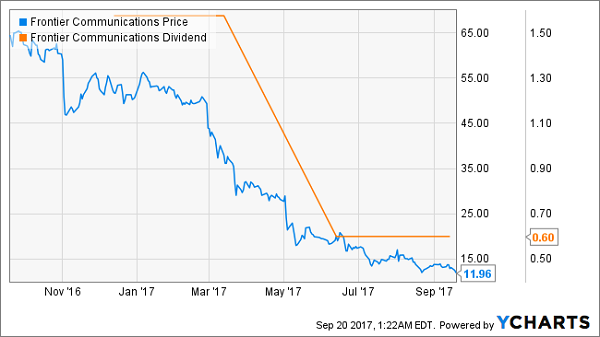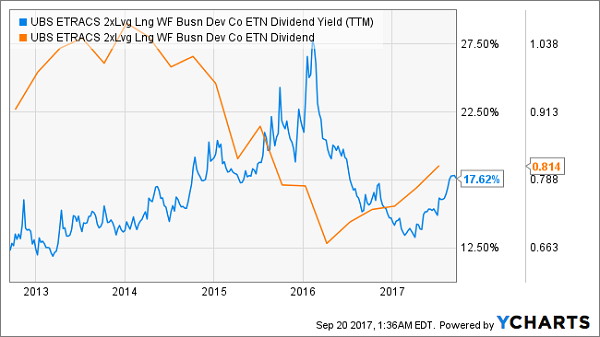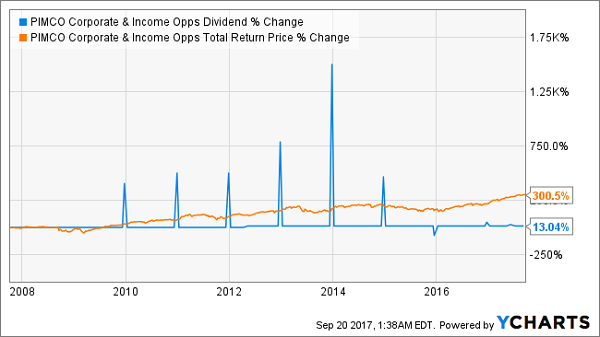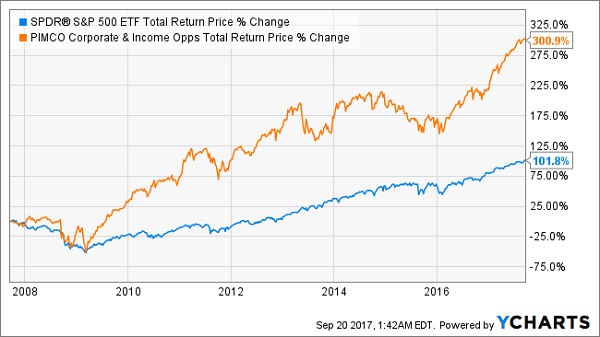It’s one of the first questions readers usually ask me:
“Don’t closed-end funds’ high dividend yields make them dangerous?”
It’s a good question, with CEFs offering yields of 8% or more. It’s also a general (but far from certain, as I’ll explain shortly) rule that higher yields bring a higher risk of a dividend cut.
Take Frontier Communications (FTR), a stock my colleague Brett Owens sounded the alarm on in April.
The telecom provider was yielding a whopping 16% before it slashed its dividend in June 2017. The stock plunged when the cut was announced:
Slashed Dividend, Slashed Share Price
FTR is yielding a whopping 20% now, thanks to its collapse in price (because you calculate yield by dividing the annual dividend rate into the current share price). The hammered share price also shows that the market doesn’t trust the company to keep paying even its shriveled payout for long. In fact, questions about whether FTR will go bankrupt are being asked on Wall Street now.
Similarly, so-called “junk bonds” yield more than their safer corporate-bond cousins. The reason for this is that investment-grade corporate bonds are seen as more reliable—the company is less likely to go bankrupt or skip payments on its debts, so investors are willing to accept a lower yield because of the lower risk.
Likewise, they demand a higher yield from junk bonds. That’s why the SPDR Bloomberg Barclays High Yield ETF (JNK) pays a much higher dividend than the iShares iBoxx Investment Grade Corporate Bond ETF (LQD):
Bonds: More Income for More Risk
Corporate bonds are essentially loans, and they behave just like a personal loan you or I would get from a bank; if the bank thinks we’re more creditworthy, they’ll give us a lower interest rate.
Does the same work for funds like ETFs and CEFs? Certainly at the extremes—you could bank a 17.6% dividend from the UBS ETRACS 2X Long Business Development Company ETN (BDCL), but that dividend will likely get cut, as it’s been slashed many times since the fund’s inception:
Big Income—But Destined to Get Smaller
Of course, if you’re getting 17.6% in income and that stream gets cut in half, you’re still getting an 8.8% yield—so big yields don’t necessarily mean a fund is doomed to collapse. You just need to be aware that your dividends could be unstable.
But as I mentioned off the top, that’s not always the case. There are some CEFs that offer big yields and have never cut their dividends—some have even raised them!
Consider the PIMCO Corporate & Income Opportunities Fund (PTY), whose market-beating performance I told you about back on June 15. PTY yields 9.3% and has never cut its payout. In fact, the fund’s dividend has risen in the last decade:
PTY: Fat Dividends and Fat Returns
Also, notice those spikes that happen every year? Those are special dividends, which some CEFs pay on top of their regular payout. The 9.3% yield doesn’t take into account the possibility of special dividends being paid out at the end of this year, either.
These outsized payouts have helped fuel PTY’s 300% run in the last decade, giving investors triple the performance of the S&P 500 over the same time period, with a big chunk of that return in cash!
Ignored Special Dividends Fuel Massive Gain
This is where our CEF Insider strategy comes into play: identifying funds with high yields that the market misunderstands. And that misunderstanding hands us a bigger income stream and a bigger portfolio (a 14.4% annualized return since our launch back in March as I write this).
Getting richer off funds with these high but sustainable dividends is nice, but these CEFs’ real power is the tremendous passive income they generate on a relatively modest portfolio. If you drop $500,000 into PTY, you’ll get $3,891 per month in income, which is more than the average American worker earns.
We’re talking about retiring and replacing a full-time job on half a million bucks.
Of course, you can’t just throw all your money in one fund like PTY. Diversification is still crucial, so you’ll need to identify funds that have reliable and sustainable dividends, then combine them to provide a balanced, low-risk portfolio.
My Top 4 CEF Buys for 7.4% Dividends and Fast 20% Upside
That’s a perfect segue into 4 other CEFs I’m recommending now. They yield a stout 7.4%, on average, but unlike PTY, they’re ridiculously CHEAP.
So cheap I’ve got them pegged for easy 20% GAINS in the next 12 months! That’s on top of their rock-solid 7.4% payouts, which are nearly 4 TIMES BIGGER than what your typical S&P 500 stock pays.
Add it all up and you’re looking at a nearly 30% total return here, with a big chunk of that in CASH.
I’ve put everything you need to know about these 4 stealth funds in a NEW special report—which is waiting for you now.